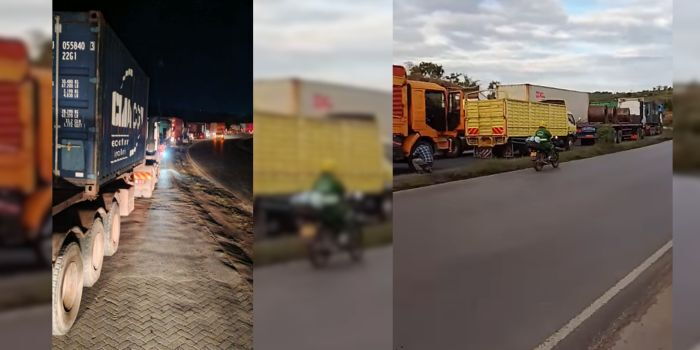Texas, Minnesota, North and South Dakota, Nebraska, Kansas, Oklahoma in Bracing New Tornadoes and Travel Chaos, What You Need To Know - Travel And Tour World
Tuesday, June 3, 2025

Bracing for new tornadoes and mounting travel chaos, the heart of America is on edge. From North Dakota to Michigan, a vast stretch of the Central US is staring down a fresh wave of violent storms. With new tornadoes forming rapidly and travel chaos spreading like wildfire, millions are left guessing: what comes next?
South Dakota, Nebraska, Kansas, and Oklahoma are already in the danger zone. Meanwhile, Texas, Minnesota, and Iowa brace for impact as weather systems grow fiercer by the hour. Missouri, Arkansas, and Louisiana sit on floodwatch, while Wisconsin, Illinois, Indiana, Ohio, and Michigan prepare for heavy disruption on land and in the skies.
The Central US is no stranger to extreme weather—but this time, it feels different. With new tornadoes spinning unpredictably and travel chaos spreading across air and ground, the clock is ticking. Here’s what you need to know before it hits.
As summer kicks off, a new storm system is setting the stage for chaos across the central United States—right in the middle of the peak travel period. A sprawling wave of severe thunderstorms is forecast to batter a wide swath of the country through midweek, posing a direct threat to airline operations, highway travel, and hotel stays from northern Texas to southwestern Wisconsin.
This multiday barrage of extreme weather puts at risk more than just outdoor plans. Travel businesses, airports, and hospitality sectors are scrambling to prepare for flight delays, flooded roads, power outages, and a likely wave of cancellations. For millions of tourists and business travelers alike, this week could bring the most significant storm-related travel disruptions since early spring.
The impact zone stretches over 1,000 miles—right through America’s central travel arteries. Major cities like Dallas, Oklahoma City, and Kansas City lie directly in the path of damaging wind gusts, large hail, flash flooding, and isolated tornadoes.
On Monday and Tuesday, airports serving these metros face the possibility of grounded flights, de-icing delays, and extensive re-routing due to severe storm bands. Travelers using Dallas Fort Worth International, Will Rogers World Airport in Oklahoma City, and Kansas City International could see cascading delays across national routes. On Wednesday, as the storms push east, cities like St. Louis, Little Rock, and even Detroit may see similar disruptions.
Meanwhile, the jet stream will intensify over the Plains, channeling high-altitude wind energy that could escalate storm strength. As a result, airport operations will need to adjust rapidly to maintain safety, including runway closures and rerouting.
The travel industry isn’t just watching the skies—it’s watching its bottom line. Hotels in central and southern Missouri, southeastern Kansas, and northern Texas are already operating near full capacity due to early summer tourism and business travel.
However, with rivers and streams swollen from May’s historic rainfall—Springfield, Missouri, recorded 7.57 inches in May alone—these properties now face the dual threat of flash flooding and power outages. Localized flooding could block access roads to popular hotels and resorts, stranding guests or forcing last-minute evacuations.
Booking sites are already seeing a surge in travel insurance purchases and last-minute cancellations. Travelers wary of severe weather are adjusting itineraries in real time, a trend that can lead to massive financial whiplash for regional hoteliers.
State and city tourism boards, especially in states like Missouri, Kansas, and Oklahoma, are bracing for a hit. June is typically a key revenue month, with families kicking off road trips, weddings filling hotel blocks, and conventions in full swing.
But with days of damaging weather forecast, footfall at museums, parks, and downtown districts is expected to nosedive. The prolonged nature of this weather pattern could cancel events and festivals planned for early June, further dampening travel demand and tourism income.
Local authorities are coordinating with emergency services and visitor bureaus to ensure safety while attempting to limit economic fallout. However, much depends on how fast the storms pass—and how much damage they leave behind.
Major U.S. airlines are enacting severe weather protocols, including waivers for change fees, early rebooking, and overnight stay reimbursements. These measures aim to reduce passenger frustration and financial loss as ground stops and cancellations ripple through the system.
Frequent flyers and casual tourists alike are being urged to check flight status regularly, allow additional transit time, and consider flexible scheduling. While the airlines’ emergency plans will help blunt some disruption, passenger bottlenecks are likely—especially at regional hubs not equipped for extended weather delays.
Moreover, airline logistics are being complicated by the possibility of multiple severe systems hitting in rapid succession. Flight crews, aircraft repositioning, and gate availability will all be under pressure from Monday through Friday.
As rain falls in sheets across highways from Illinois to Texas, rental car agencies are facing their own challenges. Vehicles are at risk for water damage, and travelers might see availability shrink as agencies relocate fleets away from high-risk flood zones.
Interstates such as I-35, I-44, and I-70—all key tourism corridors—are already prone to flash flooding. Any closures due to submerged underpasses or storm debris could force travelers onto rural detours, where services like fuel stations and restaurants may be limited or non-operational.
AAA and state DOTs are advising extreme caution for those planning long drives across the central U.S. this week, noting that road conditions can deteriorate quickly during supercell thunderstorms.
Just as one system pushes east, another cold front is predicted to move into the Plains by the weekend. This could reignite storm activity, extending the travel threat into the following week. If so, early June may turn into a logistical nightmare for domestic travel networks—especially with summer demand peaking.
As more travelers hit the road and the skies, the margin for error shrinks. The back-to-back nature of these storms threatens to stretch airline crews, highway patrols, hotel staff, and weather services thin.
For travelers, staying informed and flexible will be essential. Real-time weather apps, flight trackers, and travel alerts can provide critical lead time. Meanwhile, the travel industry must pivot rapidly—communicating clearly, adjusting services on the fly, and putting customer safety first.
For travel agencies, hoteliers, and transport providers, this week offers a critical test of readiness and resilience. Those who respond swiftly and transparently can maintain trust and minimize fallout. But for those caught unprepared, the coming storm cycle could prove costly—not just in dollars, but in reputation.
Colorado joins with Kentucky, St. Louis, Kansas, South Dakota, and Illinois in bracing for new tornadoes, and the situation is growing more intense by the hour. While tornado warnings have long been common in these states, recent storms have turned more violent and less predictable. As a result, communities across Colorado, Kentucky, St. Louis, Kansas, South Dakota, and Illinois are tightening preparations and monitoring skies with growing urgency. Meanwhile, meteorologists warn that the atmospheric setup could trigger another wave of destructive weather.
The threat of new tornadoes is no longer distant—it’s near and pressing. Entire neighborhoods are reviewing safety drills, emergency crews are on high alert, and sirens are ready to wail at any moment. Will this storm system strike with the same ferocity as recent ones? Could the damage in Colorado, Kentucky, St. Louis, Kansas, South Dakota, and Illinois grow worse? These are questions everyone is asking. And here’s what you absolutely need to know.
As the summer travel season heats up, June 2025 has delivered a grim reminder of nature’s unpredictability. Several powerful EF4 tornadoes have ripped through parts of the Midwest and South, affecting both locals and tourists. Travelers planning visits to Kansas, South Dakota, Kentucky, and Illinois should stay informed and vigilant as recovery and safety efforts continue.
These tornadoes, classified as EF4 on the Enhanced Fujita Scale, are among the most destructive. With wind speeds between 166 and 200 mph, they leave devastation in their wake, tearing through towns, uprooting lives, and rewriting travel plans.
La Crosse, Kansas, a rural gem known for its quiet plains and prairie beauty, faced direct impact. The EF4 tornado left significant damage to infrastructure and homes. The local tourism board has urged visitors to postpone non-essential travel until essential services are restored. Many farmsteads and heritage trails remain inaccessible.
Hotels and inns are being used to house displaced families, and several attractions are temporarily shut. However, the state is fast-tracking cleanup efforts. Travelers can expect clearer information by mid-July.
White River in South Dakota was also struck. A popular stop for road-trippers exploring Native American heritage and scenic drives, the area suffered widespread damage to its roads and small businesses. This has led to detours and disrupted highway access across Mellette County.
Community resilience shines as temporary shelters and resource hubs go up swiftly. While travelers may experience inconvenience, many report a strong sense of unity among locals and volunteers. Summer travel through this region is still possible with proper planning.
On May 16, a violent EF4 tornado tore through Somerset and London in Kentucky. The path of destruction was long and merciless, leaving 19 people dead and injuring at least 10 more. For travelers considering the Daniel Boone National Forest or local festivals, authorities have rerouted trails and paused events for safety.
This region was a rising hotspot for eco-tourism and Appalachian charm. Recovery funds are already flowing in, and while restoration may take months, travelers can support by planning trips in the fall when more services resume.
Marion, Illinois, was put on alert with a tornado emergency declaration after an EF4 storm battered the area. As one of Southern Illinois’ cultural and commercial hubs, Marion’s hotels, restaurants, and main streets have experienced major interruptions.
Travelers en route to the Shawnee National Forest or Garden of the Gods should prepare for rerouted access points and adjusted accommodations. Many national parks remain open, but support facilities are running with skeleton crews. Patience and flexibility are vital.
Tornadoes don’t just leave physical destruction; they test the resilience of travel systems. Airports in the affected states, including those in Louisville, Paducah, Wichita, and Rapid City, remain operational with minor delays. Still, travelers should confirm their flight statuses and check for updated weather advisories.
Meanwhile, car rentals, gas stations, and travel centers may have limited availability or slower service due to power outages and supply disruptions. Travel insurance is more essential than ever, especially plans covering natural disasters.
Travelers eager to help can contribute by postponing travel until systems stabilize or by donating to verified local aid groups. Once recovery is underway, returning tourists play a major role in rebuilding economic momentum. Eating at local diners, staying in small inns, and shopping at main-street stores helps these communities bounce back stronger.
Responsible tourism in disaster-hit zones also includes respecting local advisories, staying out of restricted zones, and being patient with service delays.
If you’re planning a trip to tornado-prone states:
June through August is peak tornado season in many U.S. states. It’s wise to build some flexibility into your plans.
Despite the setbacks, these states remain open-hearted and determined. With emergency crews, federal aid, and community volunteers working nonstop, each destination is laying the groundwork for a strong return.
By late summer, some festivals, outdoor events, and trails may reopen with safety enhancements. While the scars of EF4 tornadoes will remain for a while, they won’t stop these communities from welcoming visitors back with open arms.













